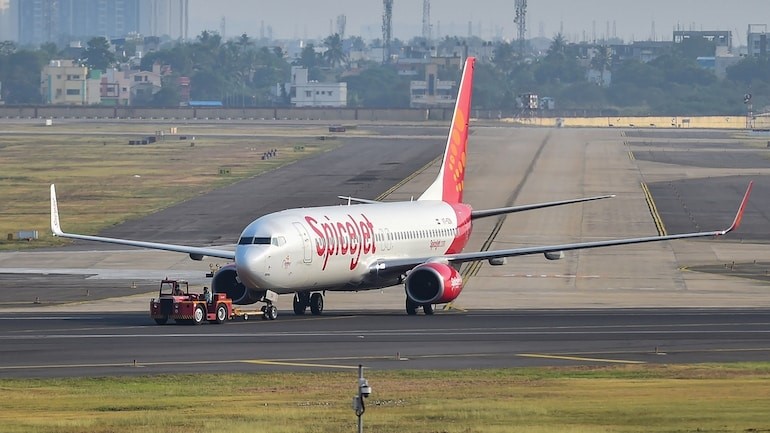
Here's what you should do when your flight hits turbulence

A seasoned flier’s heart too may skip a beat, when an aircraft they are flying in encounters turbulent weather. The passengers start to feel uneasy, afraid and anxious as the aircraft bumps and shakes violently turning an otherwise smooth ride into one resembling a drive down our notorious potholed roads.
Passengers clutch their seat handsets praying that it doesn’t get worse. But as Superman famously said in the movie, Superman Returns, after saving a plane from crash-landing, “I hope this experience hasn’t put you of flying. Statistically speaking, flying is still the safest way to travel.”
But, try telling that line to the 189 passengers on a Boeing 787-800 Spicejet flight, which was headed for Durgapur in West Bengal from Mumbai, on Sunday (May 1). The aircraft ran into severe turbulence, which led cabin luggage to fall on the heads of passengers on board causing severe injuries for some.
Though Spicejet expressed regret over the incident, and provided immediate medical assistance upon arrival for the severely injured in Durgapur, aviation regulator Director General of Civil Aviation (DGCA) has instituted a multidisciplinary team to probe the incident.
Meanwhile, it may help passengers to know more about what causes turbulence to enable them to handle what can be a frightening experience without going into a spin.
Also read: Spicejet flight caught up in turbulence during landing; passengers injured
What is a turbulence?
Turbulence is caused by the relative movement of disturbed air through which an aircraft is flying. There are three main ways it happens: mechanical, which happens when a mountain or larger man-made structure interferes with the air flow. Or, it could be thermal, which occurs during a thunderstorm. In other words, it is caused by two different air masses meeting together at different speeds.
Ocean waves too have the power to change the speed and direction of the wind, along with causing the plane to rise and fall.
As a bare concept, turbulence means disruption of airflow over the wings of an airplane, which causes it to enter irregular vertical motion. Other kinds include wake turbulence, which forms behind an aircraft when it flies, creating wingtip vortices.
What caused the turbulence that SpiceJet encountered?
SpiceJet’s flight SG-945 encountered a local wind known as Kal Baisakhi, which is a violent thunderstorm that develops over the Gangetic plains. Also known as Nor’westers, it originates in the Chhotanagpur plateau and covers the states of Bihar and Jharkhand and then moves eastwards hitting West Bengal and Odisha bringing torrential rains, heavy winds, thunderstorms, and lightning with it.
According to a news report, on Sunday, the region’s weather report, which is colour coded was red and magenta, ‘red’ indicating heavy rain and ‘magenta’ turbulence. According to a pilot quoted in a leading national daily, flights arriving in Kolkata during a Nor’wester will experience some amount of turbulence, and most captains hold the aircraft around 80-110 km ahead.
In this season, planes carry 40-45 ‘holding fuel’ apart from ‘diversion fuel’ and since a Nor’wester is short but very severe, the aircraft could have reportedly kept on hold for 45 minutes to avoid the huge vertical currents.
Also read: Staff docked, flight grounded after SpiceJet flight hits turbulence; 2 passengers in ICU
How do passengers avoid turbulent weather?
One of the suggestions given by experts is to fly early in the day and sit as far forward in the plane as possible. Turbulence is worse at the back of the plane, and passengers sitting at the back are jostled around more than the ones sitting in the front.
What should passengers do to lessen the affects of turbulence?
- Keep your seatbelt fastened when advised by the captain and the airline crew.
- Tuck away any loose items so it will not hurt you or the person next to you during times of turbulence.
- Try to focus on your breathing. When a person is stressed, they tend to hold their breath or breathe faster. So, it may help to take slow and controlled breaths.
- If the flight attendant is calm it means there is nothing to worry about.
- Try to focus on something like listening to an interesting podcast, or watch a movie or read a book.
- Try talking to the person sitting next to you
- Try to imagine a smooth landing and remain positive

